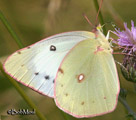Native Plants
Search for native plants by scientific name, common name or family. If you are not sure what you are looking for, try the Combination Search or our Recommended Species lists.
Fraxinus berlandieriana
Fraxinus berlandieriana DC.
Mexican Ash, Berlandier Ash, Berlandier's Ash, Plumero
Oleaceae (Olive Family)
Synonym(s):
USDA Symbol: frbe
USDA Native Status: L48 (N)
Mexican ash is a small, round-topped tree to 40 ft. The light brown bark of young plants becomes much darker and the plants age. Small tree with short trunk and rounded crown of spreading branches. Gray-green to bright-green deciduous leaves are pinnately compound.
Berlandier Ash, a southwestern relative of Green Ash (Fraxinus pennsylvanica), has fewer and smaller leaflets and smaller fruit and is adapted to a warmer, less humid climate.
Plant Characteristics
Duration: PerennialHabit: Tree
Leaf Retention: Deciduous
Breeding System: Flowers Unisexual , Monoecious
Fruit Type: Samara
Size Notes: Up to about 40 feet tall. Trunk up to about 2 feet in diameter.
Bloom Information
Bloom Color: PurpleBloom Time: Mar , Apr , May , Jun
Distribution
USA: LA , TXNative Distribution: S. TX to NM & adjacent Mex.
Native Habitat: Wooded stream banks; canyons
Growing Conditions
Water Use: MediumLight Requirement: Part Shade
Soil Moisture: Dry
Soil Description: Various soils. Limestone-based, Caliche type Sandy, Sandy Loam, Medium Loam, Clay Loam, Clay
Conditions Comments: Leafs out earlier and holds leaves longer than many ashes. Rapid growth. This is deemed a "weed tree" by organizations (e.g., TX Forest and Agriculture Extension Service) because of its short life span, susceptibility to pests and disease, and habit of constantly dropping small, dead branches.
Benefit
Use Ornamental: Long-living, Fast growing, Shade treeUse Wildlife: Cover, Nesting site, Seeds-granivorous birds, Browse.
Conspicuous Flowers: yes
Attracts: Butterflies
Larval Host: Two-tailed tiger swallowtail, Tiger swallow-tail, Orange sulphur, Sleepy orange, Cloudless giant sulphur.
Butterflies and Moths of North America (BAMONA)
|
Orange Sulphur (Colias eurytheme)  Larval Host |
Sleepy Orange (Abaeis nicippe)  Larval Host |
Giant Sulphur (Colias gigantea) Larval Host |
Propagation
Description: Seeds may be sown outdoors after collection or stored and stratified then sown in spring.Seed Treatment: Stratify in moist sand or perlite for 30-60 days at 41 degrees.
Commercially Avail: yes
National Wetland Indicator Status
| Region: | AGCP | AK | AW | CB | EMP | GP | HI | MW | NCNE | WMVE |
| Status: | FAC | FAC |
From the National Organizations Directory
According to the species list provided by Affiliate Organizations, this plant is on display at the following locations:Texas Parks and Wildlife Department - Austin, TX
Wildflower Center Seed Bank
LBJWC-1634 Collected 2014-10-07 in Hays County by Lady Bird Johnson Wildflower CenterBibliography
Bibref 298 - Field Guide to Texas Trees (1999) Simpson, B.J.Bibref 291 - Texas Wildscapes: Gardening for Wildlife (1999) Damude, N. & K.C. Bender
Bibref 297 - Trees of Central Texas (1984) Vines, Robert A.
Search More Titles in Bibliography
Additional resources
USDA: Find Fraxinus berlandieriana in USDA PlantsFNA: Find Fraxinus berlandieriana in the Flora of North America (if available)
Google: Search Google for Fraxinus berlandieriana
Metadata
Record Modified: 2022-09-23Research By: TWC Staff